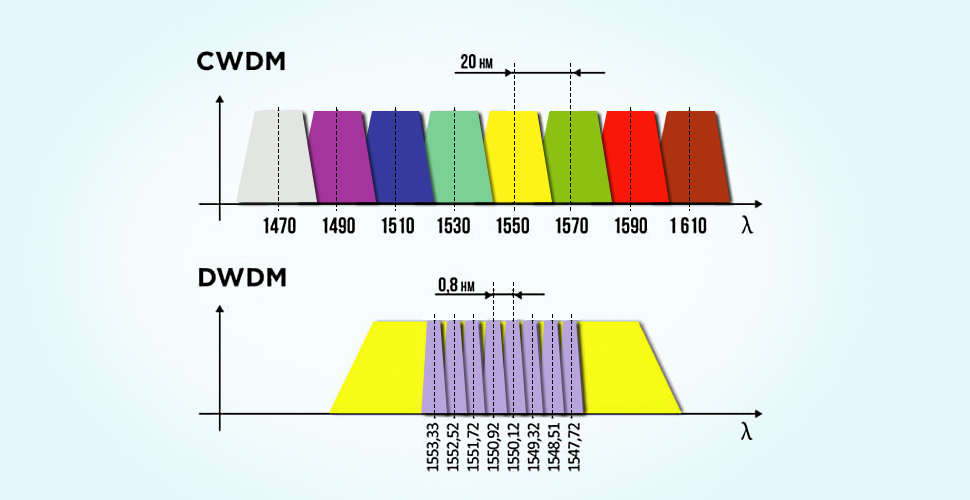A Brief Buying Guide for WDM Mux
In the rapidly evolving landscape of data transmission, the suitable WDM Mux, plays a crucial role in optimizing network performance. Whether you are setting up a new network or upgrading an existing one, a well-informed buying decision is essential. Here's a brief guide to help you navigate through the key considerations when choosing a WDM Mux.
Definition of WDM Mux
Wavelength Division Multiplexer (WDM) Mux is a pivotal component in optical communication, facilitating the efficient transmission of multiple data streams over a single optical fiber. By dividing the optical spectrum into distinct wavelengths, it enables simultaneous and independent data channels, significantly boosting network capacity. WDM Mux is integral to modern communication networks, providing scalability, flexibility, and optimized data transmission.
Types of WDM Mux
WDM Mux comes in various types, including Coarse Wavelength Division Multiplexing (CWDM) Mux and Dense Wavelength Division Multiplexing (DWDM) Mux based on different channel spacings. CWDM is suitable for short to medium-distance applications, while DWDM is designed for long-haul, high-capacity transmissions. Consider your network's requirements and choose the type that aligns with your goals.
CWDM has a wavelength spacing of 20nm, spanning 18 bands with center wavelengths ranging from 1270nm to 1610nm. Expanding the channel count to 16 is possible by incorporating the 1310nm window. Although fewer than Dense Wavelength Division Multiplexing (DWDM), CWDM strikes a balance between capacity and simplicity.
DWDM, on the other hand, densely packs channels, has different wavelength spacings at various frequencies, primarily 1.6nm (200GHz), 1.2nm (150GHz), 0.8nm (100GHz), 0.6nm (75GHz), and 0.4nm (50GHz). Among them, 0.8nm (100GHz) is the most common product in the market, capable of achieving up to 48 channels. A MUX with a 50GHz spacing can achieve a maximum of 96 channels.
You can check the article CWDM vs DWDM, what’s the Difference Between Them? to get more detailed information about CWDM and DWDM.

Figure1: CWDM vs DWDM
Benefits of WDM Mux
The fiber Mux offers numerous advantages in fiber optic networks. It optimizes the use of the optical spectrum, facilitating higher data rates and increased capacity. Additionally, the fiber Mux minimizes the requirement for multiple fibers, simplifying network infrastructure and cutting down installation costs. Lastly, its flexibility allows for seamless integration of various technologies and protocols, making it a versatile solution across different applications.
Factors to Consider When Buying WDM Mux
Single/Dual Fiber
WDM multiplexers are bidirectional, leveraging the inherent bidirectionality of light in fibers. They function as both Mux and Demux or a combination of both. In a single-fiber setup, a module can multiplex channels on one end and demultiplex them on the other with another single module. Alternatively, you can Mux half of your channels in one direction and Demux the other half. With two fibers, using a twin-module Mux&Demux allows you to multiplex channels onto one fiber and demultiplex incoming channels on the other.
Packaging
When it comes to packaging, FS WDM Mux options include: FMU packaging, FHD packaging ABS packaging and 1U Rack mount. The choice depends on your specific application and where you intend to place the Mux. Consider factors such as space constraints, environmental conditions, and ease of installation to determine the most suitable packaging for your network setup. FMU-packaged products need to be used with an FMU enclosure, while FHD-packaged products require an FHD enclosure. ABS packaging is generally customized, and 1U Rack mount is often used for products with channel counts exceeding 8CH.

Figure2: FS WDM Mux Packaging
Additional Ports
The MON (Monitoring port) enables the monitoring of received and transmitted signals on the Common port. EXP (Express port) facilitates the expansion of CWDM channels or integration of other wavelengths within the 1260-1520&1570-1635nm range. UPG (Upgrade port) is designed for expanding existing DWDM networks or transitioning from CWDM to DWDM networks.
Channel Count and Spacing
The number of channels (wavelengths) a WDM Mux can support is a crucial factor. Assess your current and future bandwidth needs to determine the appropriate channel count. Additionally, consider the channel spacing, as narrower spacing allows for more channels but may require more precise equipment.
Transmission Distance
Different WDM Mux solutions are optimized for various transmission distances. Since the DWDM equipment being within the fiber optic range, CWDM Mux are currently unable to achieve unlimited distance transmission. They have a maximum transmission distance of only 160km, while DWDM mux can transmit much longer distances than CWDM WDM mux.
Insertion Loss
Insertion loss is a critical consideration when choosing a WDM Mux. It refers to optical power loss as signals pass through the Mux. Low insertion loss is vital for maintaining signal integrity and overall system performance. Factors like component quality and device design impact insertion loss, making it essential to opt for a WDM Mux with high-quality components and a well-engineered design to minimize signal loss and ensure reliable optical communication.
Compatibility and Interoperability
Ensure that the selected WDM Mux is compatible with your existing network infrastructure. Interoperability is crucial, especially if you plan to integrate new components or expand your network. Check for industry standards and compatibility with other vendors' equipment.
Reliability and Redundancy
Reliability is paramount in network infrastructure. Choose a WDM Mux with built-in redundancy features to ensure continuous operation even in the event of a component failure. Redundant power supplies and hot-swappable modules enhance reliability.
Conclusion
In conclusion, selecting the right WDM Mux involves a thorough understanding of your network requirements, technical specifications, and long-term goals. By considering these key factors, you can make an informed decision that aligns with your network's needs and sets the foundation for efficient and scalable optical communication.
You might be interested in
Email Address

-
PoE vs PoE+ vs PoE++ Switch: How to Choose?
Mar 16, 2023














